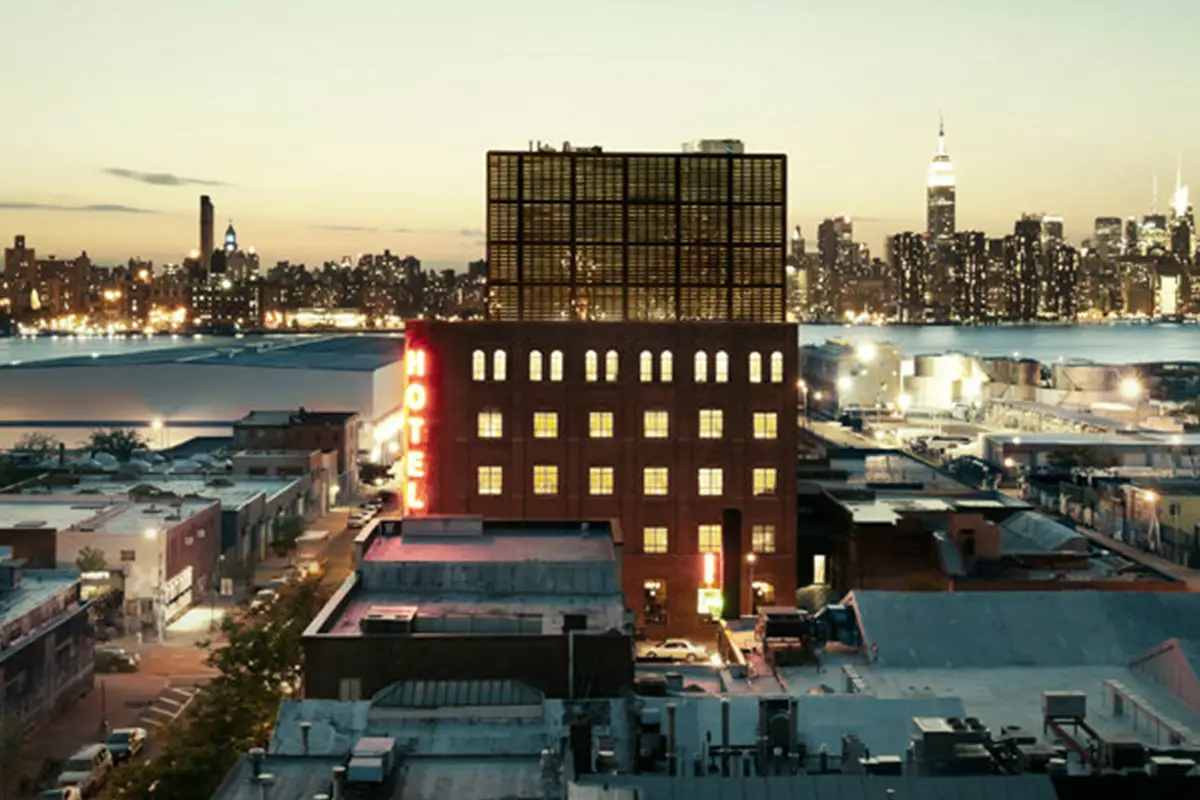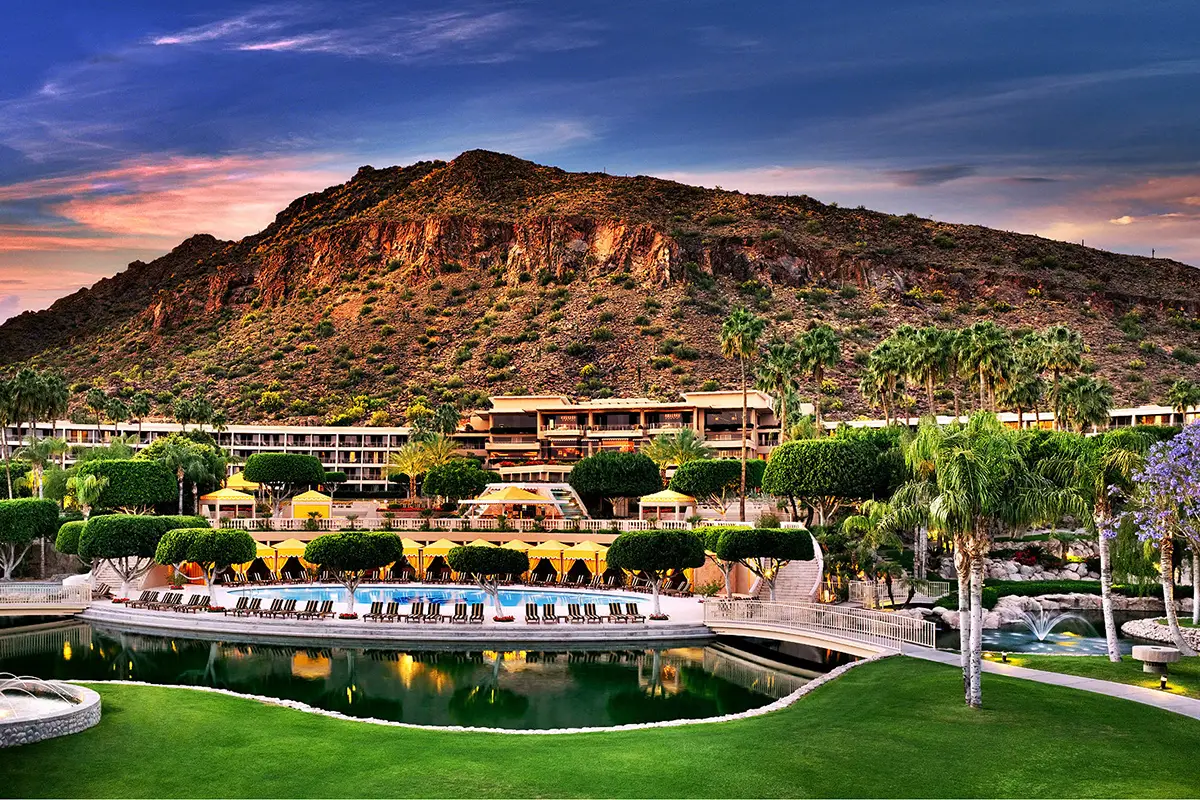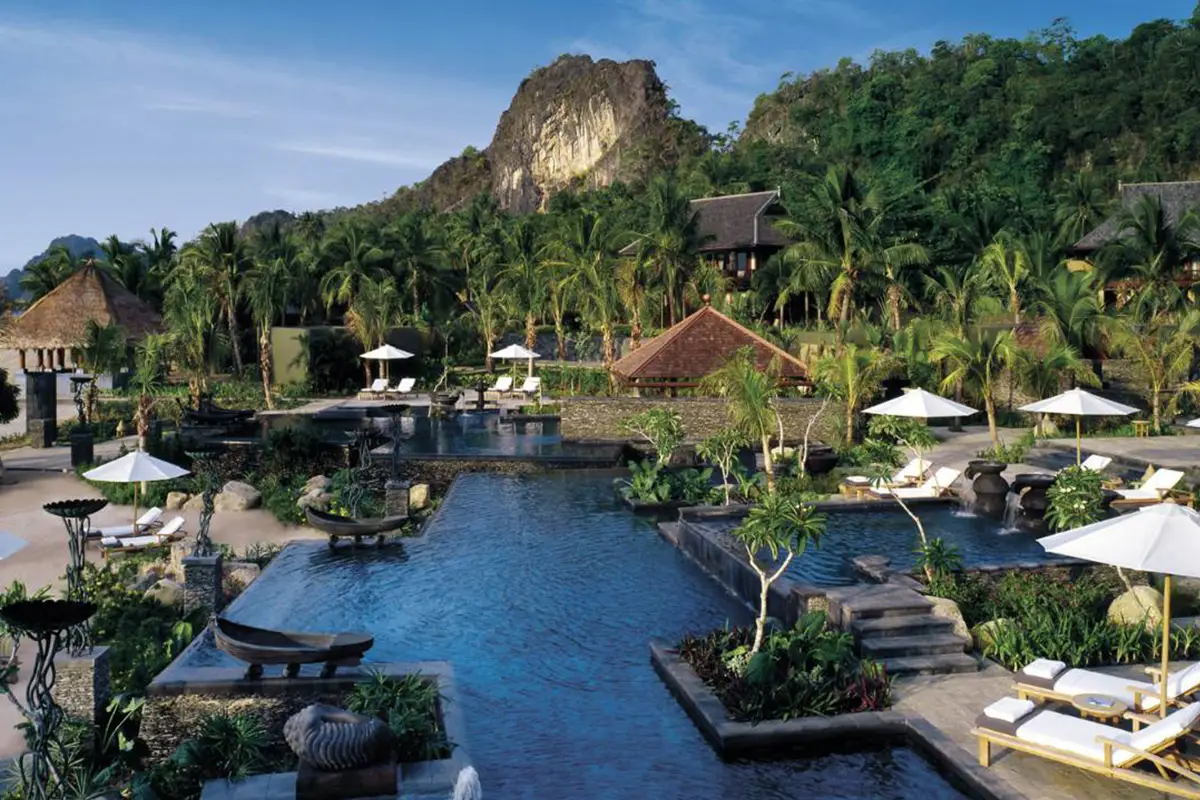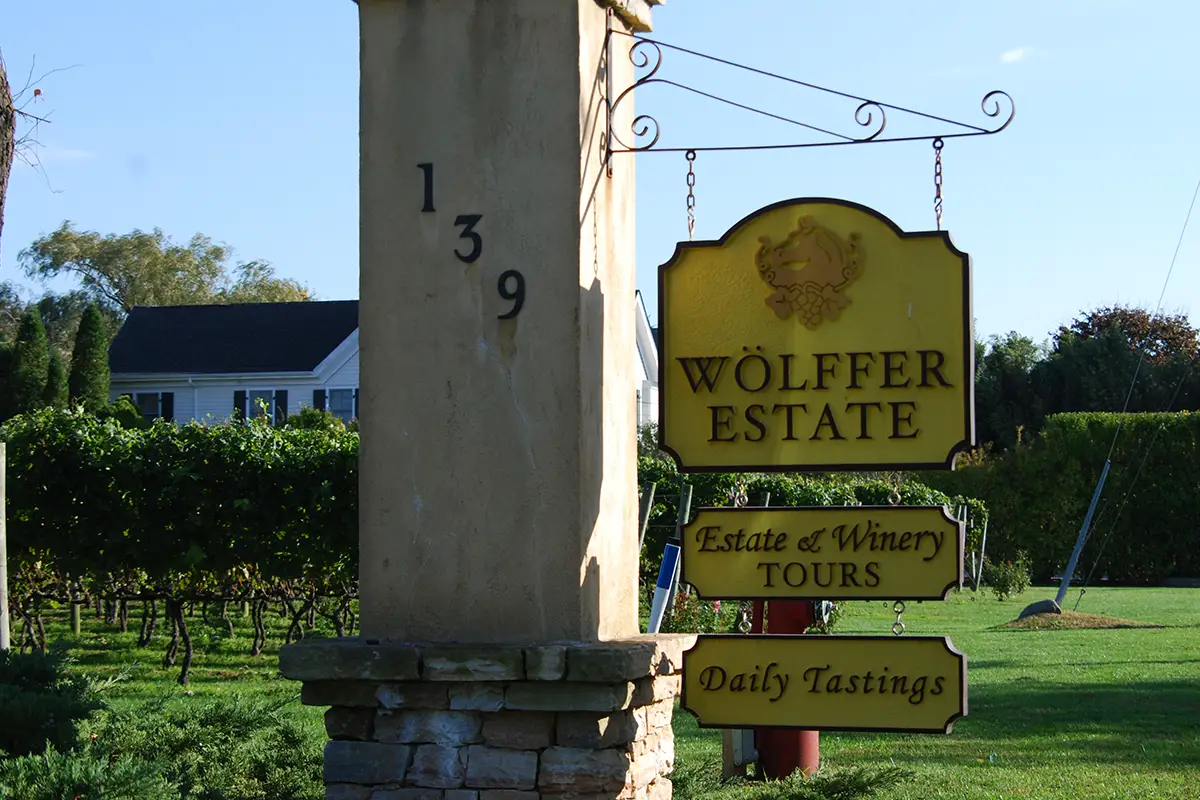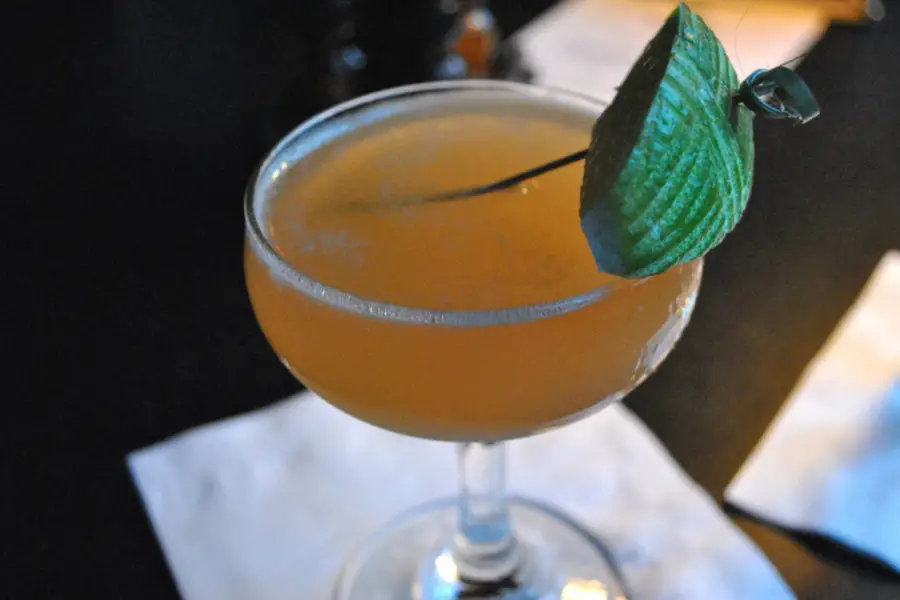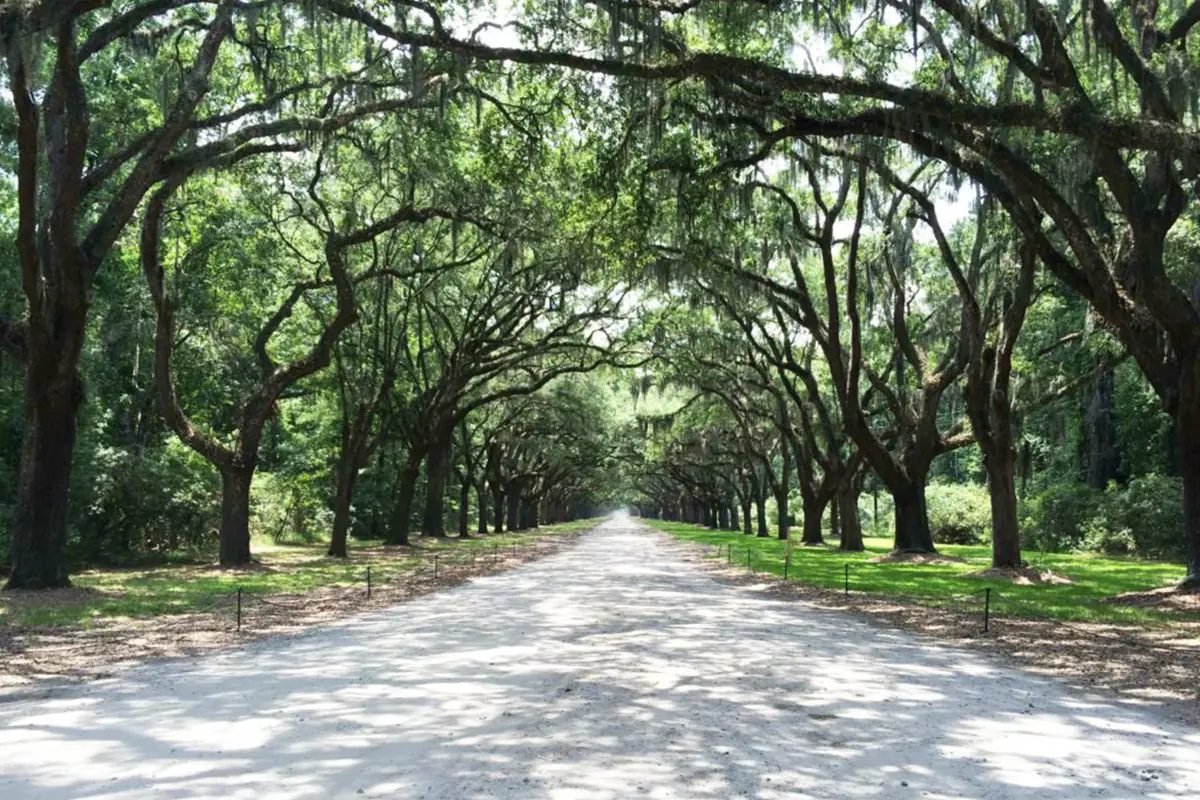For visitors to New York, it’s always been basically unheard of to stay anywhere but Manhattan. And if you did want to come up with an alternative home base, it would have been hard to do, considering how few hotels there were in any other borough. Continue reading
 The Fabulous Phoenician
The Fabulous Phoenician
Since 1988, Scottsdale’s The Phoenician Resort has been a vast oasis in the desert, a 250-acre luxury property offering guests some of the Southwest’s best in dining, spa, golf and more. Continue reading
 Luxury in Langkawi
Luxury in Langkawi
Some 30 kilometers off the mainland coast of northwestern Malaysia lies the 99-island archipelago of Langkawi, a jungle-covered paradise in the Andaman Sea. The eponymous Pulau Langkawi is the largest of the islands and a getaway for everyone from backpackers to those in search of some of the nicest hotels in the world. Continue reading
 Pamper Like It’s 1851 at Kiehl’s Apothecary
Pamper Like It’s 1851 at Kiehl’s Apothecary
 A (North) Fork In The Road
A (North) Fork In The Road
Now is the time to visit the North Fork. The summer crowd is gone and the early fall visitors that descend upon the narrow fork for wine tasting and apple and pumpkin-picking have mostly thinned out. Finally, the area’s main road, Route 25, is easy to drive once more. Continue reading
 Breakfast in Bridgehampton
Breakfast in Bridgehampton
Opened in late 2012, with Tom Colicchio at the helm and a 19th century Greek Revival mansion as its setting, Topping Rose had an instant pedigree that made it a shoe-in among the East End’s must-visit destinations. Happily, it has delivered and should continue to as we enter the busy season out on eastern Long Island. Continue reading
 Georgia on My Mind
Georgia on My Mind
People may write songs about Paris in the springtime, but the streets of Savannah, Ga. are filled with the sounds of music and the scent of magnolias during its annual Music Festival. Kicking off on Thursday, March 22, and running for two weeks, this festival is famous for its eclectic line-up, drawing performers in an astounding array of musical styles. There are few other festivals where you can catch a bluegrass concert at noon, choose from chamber music or a Cajun at six, and then move on to hear New Orlean’s Preservation Hall Jazz Band before bed.
The festival is 17 days long, so even if you can’t make if for this week you should consider heading south sometime soon. The musical smorgasbord of over 100 performances is truly one of a kind, and you’re likely to snag better seats at this event than you would if you were to try to catch one of the performers in concert elsewhere. A full calendar can be found here.
When you’re dreaming rather than dancing, the famous 24 squares (which date to 1733, when the English gentleman James Oglethorpe laid out the city’s plan) are home to B&Bs that range from modest to luxurious, as well as several larger properties. The 126-room Mansion on Forsyth Park is arguably the city’s most luxe option, located in the city’s historic district and, as its name implies, facing downtown Savannah’s largest park. The décor is a mix of antiques and contemporary pieces, and old pieces given a contemporary makeover with a coat of eye-popping color. It’s a jumble that feels appropriate for this city that is at once stately and eccentric, the unique atmosphere famously captured in “Midnight in the Garden of Good and Evil.“ The 17-room Hamilton-Turner Inn is more intimate, found in an appealingly atmospheric Second Empire mansion on Lafayette Square. The decor includes four-poster beds, potted palms, and Oriental rugs. They pile on the Victoriana but stop becfore it gets cloying.
Savannah isn’t especially known as a culinary capital, but they know how to fry up catfish. The Olde Pink House on Reynolds Square (adjacent to the Planters Inn) serves sophisticated Southern fare (hush puppies with a peach remoulade; Vidalia onion and sweet potato ravoli) in an elegant 18th-century mansion. Winos and seafood lovers will relish a meal at 700 Drayton, a fine eatery located in the aforemntioned Mansion on Forsyth Park. Allow your eyes to feast on chic artwork as you enjoy the best of local cuisine. Dessert seekers should seek out long-standing Savannah fixture Leopold’s Ice Cream, a classic old-school soda fountain that first opened in 1919 but then closed in 1969. In 2004 the store reopened at a new location, on East Broughton Street, a short walk from Reynolds Square and Oglethorpe Squares. Many of the furnishings are original, while the flavors range from traditional (butter pecan and their signature tutti frutti) to new-fangled (Japanese cherry blossom). If an ice cream shake doesn’t pack enough punch for you, head to River Street, which runs parallel to the Savannah River and is packed with jazz bars, nightclubs and lounges.
Finally, and especially if you are headed to Savannah after the heat of summer has settled in, consider a detour to Tybee Island, 20 minutes from downtown. The seven-room Tybee Island Inn has gardens draped in Spanish moss, and is a perfect base for exploring the quiet three square miles of sandy beaches and salt marshes.
 Colombia’s Coffee Triangle
Colombia’s Coffee Triangle
Nearly everyone is familiar with Juan Valdez, the character created by Colombia’s coffee industry in 1959 to promote bean exports. Fewer people, though, tend to know about the region that inspired the character. The aptly named Coffee Triangle (Cafetero Triangolo) was designated a world heritage sight by UNESCO in June 2011. I had the pleasure of visiting this past August.
Nestled in the Central Andes in the heart of Colombia, the Coffee Triangle gives its visitors something completely different from the colonial Caribbean vibe of Cartagena and the frenetic urban sprawl of Bogotá (the two most popular destinations for North American travelers to Colombia). From 18th century “fincas” to modern boutique hotels with amenities to match, this mountainous area is home to a glorious range of seriously one-of-a-kind accommodations. A standout is the “boutique hacienda” property Sazagua. Reflecting the flora of the region with its bamboo décor, each room is equipped with Wifi and a flatscreen TV. The effect of this is a unique expression of eco-sensitive luxury that perfectly captures the essence of Colombia’s burgeoning inland tourism.
What to do once there? Of course you should tour a plantation and do a coffee tasting (something that is taken as seriously here as wine tasting in a grape-growing region) but the biggest draw for me was nature. There are many well-appointed golf courses; Colombia is known as something of a golfing destination within Latin America. Or you could go hiking in the Los Nevados Natural Parque, whose highest snow-capped peaks stretch some 5,000 meters above sea level. For those in search of adventure, there’s white water rafting and canopy ziplines. I did the Bosque de Saman, a dizzying course that takes you more than 2,000 meters above a lush canopy of coffee plants (full disclosure: I almost chickened out from going at all, but was cajoled into taking the plunge by the guys running the zipline. I’m happy I caved, though, because even for this terrified-of-heights traveler, it was a beautiful experience.) After upping the adrenaline, you may want to take advantage of the region’s famed natural springs. Los Termales de San Vicente and Santa Rosa are home to spas, natural springs and various accommodations for travelers in search of calming, age-old water cures. Another incredibly relaxing excursion is a visit to the botanical gardens and butterfly preserve, which is home to more than 600 species of plants, 200 of birds and many, many fluttering “mariposas.” Horseback rides and four-wheel-drive Jeep excursions are also a popular way to immerse oneself in the region.
Even if you’re a tea drinker, there are culinary takeaways that make this mountainous region a delicious experience. Colombia’s indigenous assortment of fruits – and the concordant ubiquity of fresh squeezed juices and “batidos” (milkshakes made with fruit) – is truly impressive. Guayaba, guanábana, pineapple, chirimoya, curuba, níspero, lulo, maracuyo, tomate de árbol (that last one means “tree tomato” and it looks like a tomato but tastes sweet and tart): the list goes on and it was unlike any place I’ve ever been in terms of taste and variety. Plus, the locals know to capitalize on their natural riches: From decadent and colorful breakfasts to thoughtfully prepared dessert, the jewel-toned regional bounty makes constant appearances. Another must-have meal in the Central Andes is their river trout. A specialty of the “estancias“ and farmhouses of the area, it’s prepared to order and 100 percent representative of the clean flavors of the coffee region.
*Not enough of a java boost? Check out fellow GLR writer David Perry’s review of the Presso Espresso Coffee Maker.
 Wine, Spas and Springs in Napa at Calistoga Ranch
Wine, Spas and Springs in Napa at Calistoga Ranch
It’s crush season in Napa. From now until the end of October, Northern California’s incomparable wine country will be even more bountiful than usual as wineries celebrate harvest season with music, events and much more.
The area is home to many amazing resorts and hotels but for a truly one-of-a-kind experience, I can’t recommend Calistoga Ranch highly enough. Built into a private canyon and comprising 48 freestanding guest lodges, it’s a hidden luxury retreat in the heart of the Napa Valley.
The town of Calistoga has a long history as a charmed destination. Its natural hot springs were a big draw to early settlers who gave the town its name by combining California with Saratoga, New York state’s famous hot springs destination.
The area’s first official spa was on the site of what is now Indian Springs. The original 1861 spa featured amenities that have since been converted into a state-of-the-art spa and resort with a naturally heated Olympic-sized mineral pool. Today, Indian Springs continues to draw guests from all over the world.
What makes the Calistoga Ranch such a standout is that it combines the rugged natural beauty of the area with sophisticated design. Its architects seem to have built luxury right into the landscape. Rather than cut down the exquisite, centuries-old trees which give shade to the canyon, they built the cabins around them. Some cabins have thick tree trunks sprouting up right through the middle of their floors. Indoor/outdoor fireplaces (each cabin has one) complete the seamless joining of the natural with the manmade. Other luxe amenities include Mercedes convertibles available for guests’ use and private outdoor Jacuzzis.

The “Wine Cave” at Calistoga Ranch
The property is home to a spa that does justice to a town that has long been associated with restorative cures. The Calistoga Cure includes a modern-take on the classic “taking of the waters,” including a therapeutic mineral salt body scrub, private outdoor mud or mineral salt bath and massage.
With harvest season in full swing, fall is a fantastic time to visit Napa. Here are some highlights to think about when planning your trip:
October 1: Smaller winery Elizabeth Spencer hosts its Harvest Celebration, featuring tastings and hors d’oeuvres in their beautiful courtyard.
October 9: Peju winery holds its Club Crush celebration, a tune-filled outdoor evening under the stars.
October 22: Join founding winemaker Della Viader and her family for an evening of barrel tasting “future vintages” and nibbles.
October 27: The well-known Cakebread winery will be reaching into its archives to pour flights of vintage Cabernet Sauvignons.
November 9-13: The Napa Valley Film Festival marks the end of the season; take part in tastings, special dinners and screenings.
And of course, there is much, much more going on, including concerts, cooking classes and wine dinners. Click here for a comprehensive list of 2011 Events.
